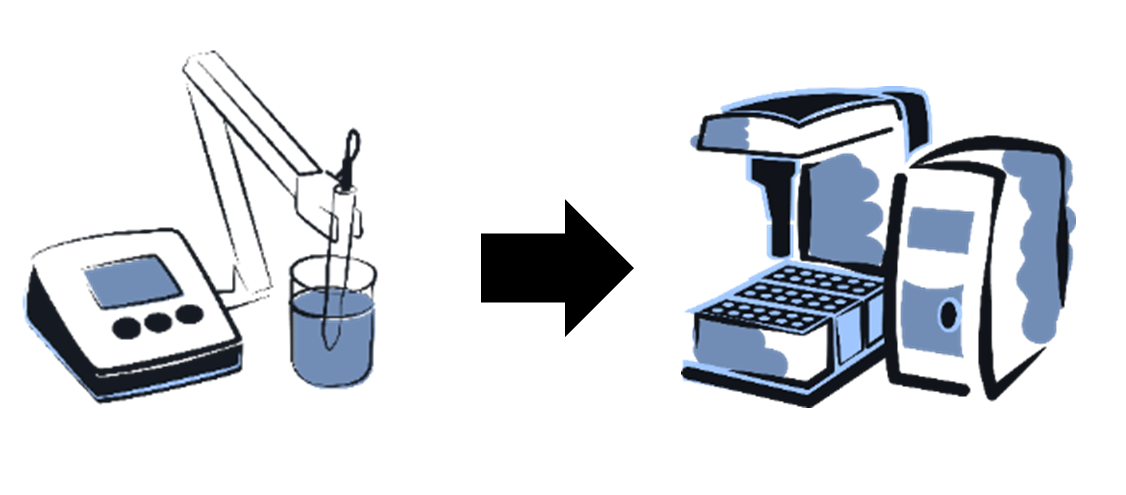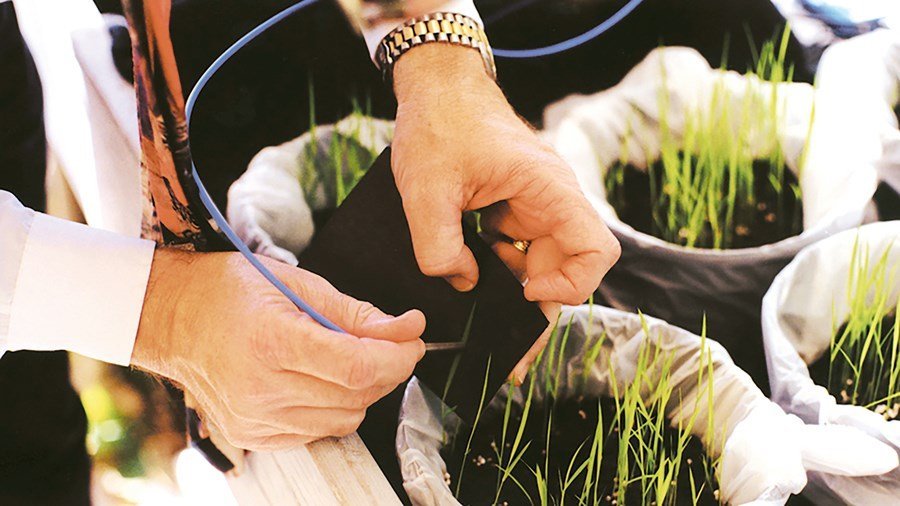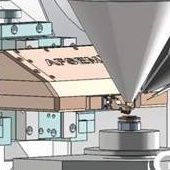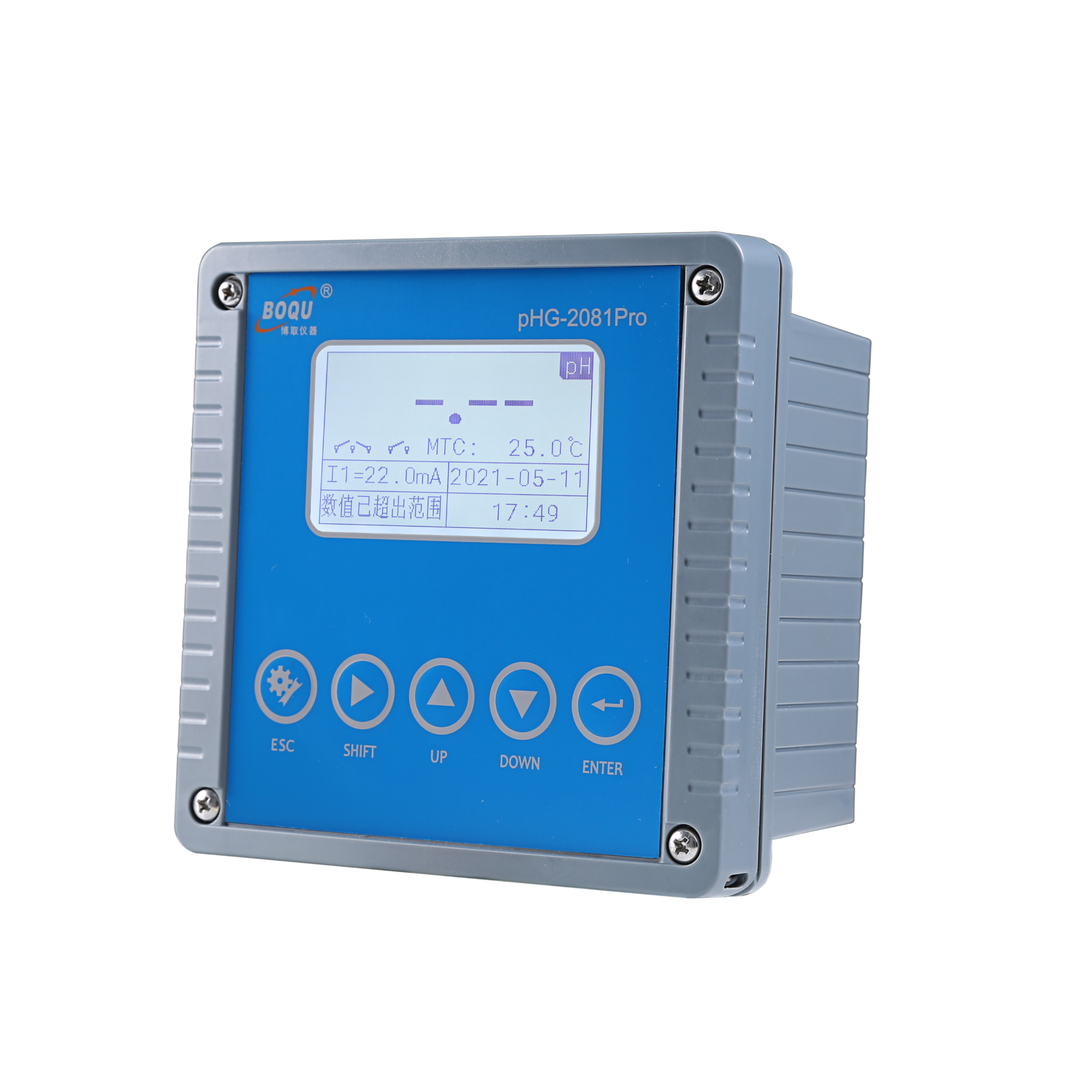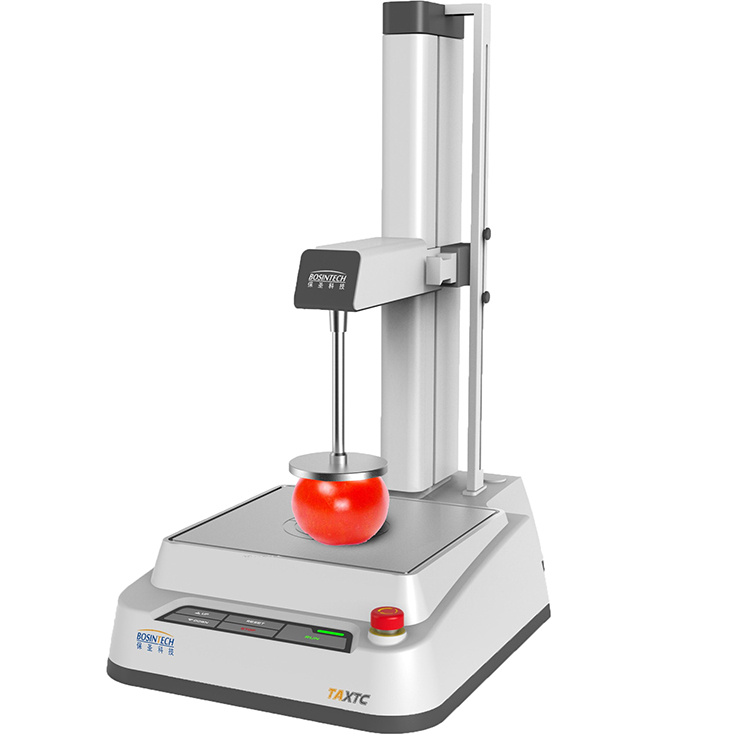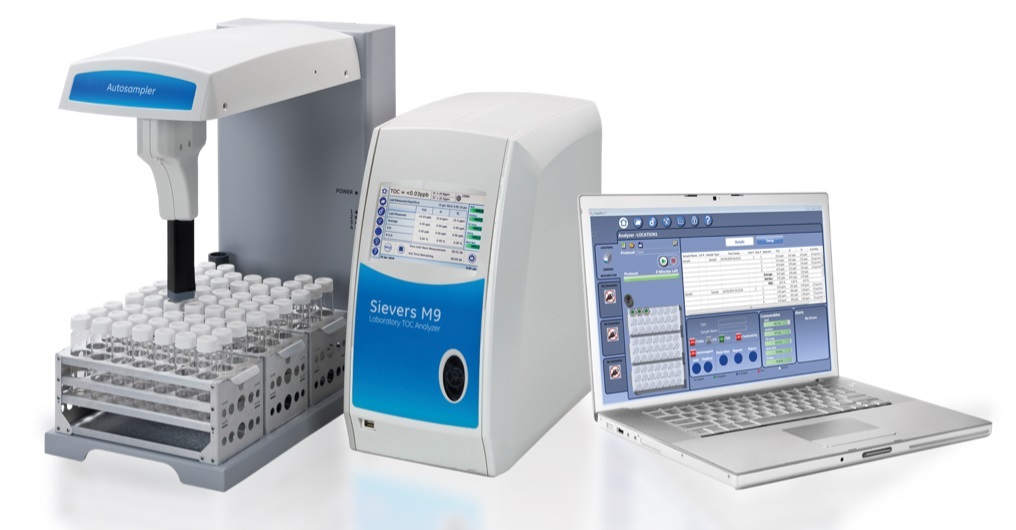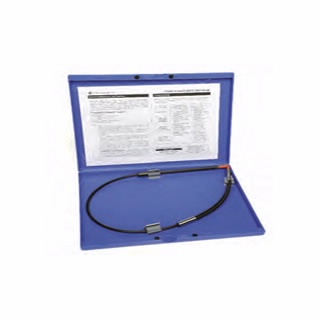易轻忽之肯綮:扫描电镜工作距离与探头的选择(上)——安徽大学林中清32载经验谈(9)
p style=" text-align: justify text-indent: 2em " strong 【作者按】 /strong 工作距离和探头的选择,主要影响着扫描电镜的信息接收。选择的是否合适,对形成怎样的样品表面形貌像起着举足轻重的作用。实际测试工作中,我们往往只关注信息的产生,也就是加速电压与束流的选择,而对工作距离和探头的选择往往存在轻忽甚至误解的现象。 /p p style=" text-align: justify text-indent: 2em " 关于形貌像分辨率的主流观点:工作距离越小,形貌像分辨率越好。其依据是:1.束斑说:工作距离越小,束斑越小,束斑越小分辨率越好。2.球差说:工作距离越小,物镜球差对结果的影响越小,故分辨率也越佳。球差及束斑说都有一定道理,但都不是影响表面形貌像分辨力的最根本因素。 /p p style=" text-align: justify text-indent: 2em " 形成上述观点,与电镜厂家力推小工作距离的理念有关。特别是有些厂家几乎放弃对使用样品仓探头获取样品信息的研究,仅将其作为一个低倍寻找样品测试位置的工具。这将限制我们的视野,获取的表面形貌信息也极其贫乏。 /p p style=" text-align: justify text-indent: 2em " 本人所用品牌的时候冷场电镜由于对早期样品仓探头结构设计的继承,使得本人充分体会到:各种不同的工作距离和探头组合,将带来怎样不同的样品表面形貌信息,而这些不同的信息又恰恰是我们能够正确且充分观察和分析样品的基石。 /p p style=" text-align: justify text-indent: 2em " 下面将从形貌衬度,这一形成表面形貌像的主导因素为切入点,以实例来展示并详细探讨:不同工作距离和探头的组合与形貌衬度的形成有何关联?对表面形貌像的获取及图像的分辨能力有何影响?各种组合都具有怎样的优缺点? /p h1 label=" 标题居中" style=" font-size: 32px font-weight: bold border-bottom: 2px solid rgb(204, 204, 204) padding: 0px 4px 0px 0px text-align: center margin: 0px 0px 20px " strong span style=" color: rgb(0, 176, 80) font-size: 18px font-family: 宋体, SimSun " 一 、工作距离和探头的选择与形貌衬度的形成& nbsp /span /strong /h1 p style=" text-align: justify text-indent: 2em " 扫描电镜形貌像的形成如同用眼睛去观察一个物体。物体图像的形态并不取决于眼睛从物体上获取了怎样的光线,而是基于从那个角度去观察这个物体。对图像细节的影响来自四个方面,光线的能量和强度、眼睛的视力及观察角度,其中观察角度是根基。物体细节越粗,观察角度的影响越大。 /p p style=" text-align:center" img style=" max-width:100% max-height:100% " src=" https://img1.17img.cn/17img/images/202006/uepic/7446c1ff-2094-4dea-9c24-fd02dc025494.jpg" title=" 1.png" alt=" 1.png" / /p p style=" text-align: justify text-indent: 2em " 二次电子和背散射电子是形成样品表面形貌像的信息源,如同形成图像的光。探头如同人的眼睛,它获取样品表面形貌像的形貌衬度信息,如同从不同角度去观察这个样品。信息到达探头的角度是形成表面形貌像的基础。 /p p style=" text-align: justify text-indent: 2em " 正如本人在经验谈(4、5、6)中给大家所描述,形貌衬度是由样品表面形貌高低差异所形成的信息衬度。形成该衬度的主导因素随以下两个不同层级的信息需求而不同: /p p style=" text-align: justify text-indent: 2em " A. 低倍率,观察的样品表面形貌起伏较大(二十纳米以上)。探头、样品及电子束三者之间的夹角所形成的形貌衬度才能满足形貌像的形成需求,此时这个夹角就是主导因素。 /p p style=" text-align: justify text-indent: 2em " B. 高倍下,观察的空间差异小于十几纳米,形貌衬度小,电子信息溢出角度所形成的形貌衬度就完全满足需求。由于信息扩散对这类细节影响极大,靠近镜筒,从样品顶部获取更多二次电子是最佳方案,此时低角度信息就变为主导因素。 /p p style=" text-align: justify text-indent: 2em " 选择不同的工作距离和探头,就是为了调控探头所接收的样品信息类型及信息的接收角度,以形成充分的图像衬度。 /p p style=" text-align: justify text-indent: 2em " 工作距离与探头的选择是如何调控探头获取样品表面形貌像的形貌衬度信息,进而影响表面形貌像的细节形成及分辨?下面将结合实例来给大家做详细的展示及描述。 /p h1 label=" 标题居中" style=" font-size: 32px font-weight: bold border-bottom: 2px solid rgb(204, 204, 204) padding: 0px 4px 0px 0px text-align: center margin: 0px 0px 20px " strong span style=" color: rgb(0, 176, 80) font-size: 18px font-family: 宋体, SimSun " 二、表面形貌像与工作距离和探头的选择 /span /strong /h1 p style=" text-align: justify text-indent: 2em " 选择不同的工作距离和探头,能对图像形貌衬度的获取形成调控。那是如何调控?又是如何影响样品表面形貌像? /p p style=" text-align: justify text-indent: 2em " strong 2.1不同工作距离下各探头对表面信息的接收示意图 /strong /p p style=" text-align: justify text-indent: 2em " 以某公司冷场电镜为例(样品:介孔硅,孔径& lt 10nm): /p p style=" text-align:center" img style=" max-width:100% max-height:100% " src=" https://img1.17img.cn/17img/images/202006/uepic/b8cc6b0c-010b-4077-97bc-4e1558635e77.jpg" title=" 2.png" alt=" 2.png" / /p p style=" text-align: justify text-indent: 2em " & nbsp & nbsp a.样品台不加减速场:到达顶探头的主要是间接的、能量较高的高角度背散射电子(HA BSE)。图像特性表现为:信息量不足、细节分辨差、但受荷电影响小。(SBA-15颗粒) /p p style=" text-align: justify text-indent: 2em " & nbsp & nbsp & nbsp & nbsp & nbsp & nbsp & nbsp /p p style=" text-align:center" img style=" max-width:100% max-height:100% " src=" https://img1.17img.cn/17img/images/202006/uepic/f6e11aa0-c8f0-462d-99c9-6787b93e2ac6.jpg" title=" 3.png" alt=" 3.png" / /p p style=" text-align: justify text-indent: 2em " 工作距离越大顶探头接收的信息越少,基本不存在测试意义。 /p p style=" text-align:center" img style=" max-width:100% max-height:100% " src=" https://img1.17img.cn/17img/images/202006/uepic/db70895c-9571-49ac-af9a-286cbaa168d2.jpg" title=" 4.png" alt=" 4.png" / /p p style=" text-align: justify text-indent: 2em " & nbsp & nbsp & nbsp & nbsp & nbsp br/ /p p style=" text-align: justify text-indent: 2em " b.采用减速模式:二次电子能量得到加强,使顶探头接收的样品信息改以高角度二次电子为主。图像特性:二次电子衬度及边缘效应增加、形貌立体感较差、荷电及电位衬度较大。 /p p style=" text-align: justify text-indent: 0em " span style=" text-indent: 2em " /span /p p style=" text-align: center " img style=" max-width:100% max-height:100% " src=" https://img1.17img.cn/17img/images/202006/uepic/4333ec84-2237-4e5f-9c47-c7424021ada4.jpg" title=" 5.png" alt=" 5.png" / span style=" text-indent: 2em text-align: justify " & nbsp /span /p p style=" text-align: justify text-indent: 2em " 顶探头图像的Z衬度会更强烈一些,但要求样品有较强的信息量,故应用领域不广,实例较少。具体可参看经验谈(6)。 /p p style=" text-align: justify text-indent: 2em " 总之,该公司扫描电镜设置的探头中:顶探头要求样品本身有较高的信息产额,仅利于在小工作距离条件下获取某些特殊的图像衬度信息,如:Z衬度及电位衬度,故使用频率少。 /p p style=" text-align: justify text-indent: 2em " 对于大部分样品信息的获取,起主力军作用的是上、下探头,因此下面讨论的重点将针对这两个探头展开。实例的展示及探讨将以介孔硅KIT-6为样本,按高、低倍分组来进行。 /p p style=" text-align: justify text-indent: 2em " WD& lt 3mm、低倍:10万倍以下,观察的细节大于20纳米。& nbsp & nbsp /p p style=" text-align:center" img style=" max-width:100% max-height:100% " src=" https://img1.17img.cn/17img/images/202006/uepic/ee3af742-eeab-4911-acf1-ccd39b700db4.jpg" title=" 6.png" alt=" 6.png" / /p p style=" text-align: justify text-indent: 2em " 高倍(20万倍):观察10纳米以下细节。这类细节的起伏小,形貌衬度要求低,不同角度的二次电子就足以形成表面形貌像所需的形貌衬度。此时信息扩散对细节影响将变成主导因素,更多的接收二次电子就成为获取高分辨细节的关键。 /p p style=" text-align: justify text-indent: 2em " 如上示意图,EXB系统对进入上探头的信号进行分离,使其接收的基本是二次电子,对细节影响小;通过信息转换板,探头又接收到更多的低角度信息,因此利于形成细节为10纳米以下的形貌像。各探头形成图像的具体结果如下: /p p style=" text-align:center" img style=" max-width:100% max-height:100% " src=" https://img1.17img.cn/17img/images/202006/uepic/cbe76ddb-a22b-4bd5-ad70-c9057c2641ae.jpg" title=" 7.png" alt=" 7.png" / /p p style=" text-align: justify text-indent: 2em " 该工作距离,下探头无信号,信息混合后结果倒向上探头。采用减速模式将帮助上探头获取更充分的样品信息。 /p p style=" text-align: justify text-indent: 2em " span style=" text-indent: 2em " /span /p p style=" text-align:center" img style=" max-width:100% max-height:100% " src=" https://img1.17img.cn/17img/images/202006/uepic/b3ba0c5c-c2a3-49cb-a4fa-8653853454d2.jpg" title=" 8.png" alt=" 8.png" / span style=" text-indent: 2em text-align: justify " & nbsp & nbsp & nbsp /span /p p style=" text-align: justify text-indent: 2em " B)工作距离适中(WD=8.1mm): /p p style=" text-align:center" img style=" max-width:100% max-height:100% " src=" https://img1.17img.cn/17img/images/202006/uepic/7a1ebaf2-fb73-4803-a009-cd97a2aa8a65.jpg" title=" 9.png" alt=" 9.png" / /p p style=" text-align: justify text-indent: 2em " 低倍:10万倍以下,观察的样品细节主要在20纳米以上。在这个工作距离下:上探头形貌衬度较差,下探头信号量不佳,故单独观察都有较大问题。 /p p style=" text-align:center" img style=" max-width:100% max-height:100% " src=" https://img1.17img.cn/17img/images/202006/uepic/c8c01847-39c9-4150-a862-5ed7dc40b2bf.jpg" title=" 10.png" alt=" 10.png" / /p p style=" text-align: justify text-indent: 2em " 高倍:20万倍,观察的样品表面细节在10纳米以下& nbsp & nbsp & nbsp & nbsp & nbsp & nbsp & nbsp & nbsp & nbsp & nbsp & nbsp & nbsp & nbsp /p p style=" text-align:center" img style=" max-width:100% max-height:100% " src=" https://img1.17img.cn/17img/images/202006/uepic/367f675f-d917-4132-b5b5-dc72868ef096.jpg" title=" 11.png" alt=" 11.png" / /p p style=" text-align: justify text-indent: 2em " 上、下探头的混合结果:上探头获取的信息较多,是主要信息源。故整体偏向上探头获取的图像特性。 /p p style=" text-align:center" img src=" https://img1.17img.cn/17img/images/202006/uepic/aa45b67b-1415-461d-9ee6-5594b663afdf.jpg" title=" 12.png" / /p p style=" text-align:center" img src=" https://img1.17img.cn/17img/images/202006/uepic/10a2946a-c21a-4b3b-9c3a-46579b607c42.jpg" title=" 13.png" / /p p style=" text-align: justify text-indent: 2em " C)大工作距离(WD=15.1 mm) /p p style=" text-align:center" img style=" max-width:100% max-height:100% " src=" https://img1.17img.cn/17img/images/202006/uepic/841a1b4a-39c8-4cea-9114-5c93b196ba13.jpg" title=" 14.png" alt=" 14.png" / /p p style=" text-align: justify text-indent: 2em " 低倍:10万倍以下,观察20纳米以上的细节。 /p p style=" text-align:center" img style=" max-width:100% max-height:100% " src=" https://img1.17img.cn/17img/images/202006/uepic/5adb4e8e-4576-4e0e-aa67-2b72bfdf8f99.jpg" title=" 15.png" alt=" 15.png" / /p p style=" text-align: justify text-indent: 2em " 高倍:20万倍,观察细节10纳米以下。 /p p style=" text-align:center" img style=" max-width:100% max-height:100% " src=" https://img1.17img.cn/17img/images/202006/uepic/e2dd614b-b1c3-439f-8eca-4a481eae9dcb.jpg" title=" 15.png" alt=" 15.png" / /p p style=" text-align: justify text-indent: 2em " 上、下探头混合后,结果倒向下探头。 /p p style=" text-align:center" img style=" max-width:100% max-height:100% " src=" https://img1.17img.cn/17img/images/202006/uepic/aa741213-5299-4f63-9dc8-2f210ade6e28.jpg" title=" 16.png" alt=" 16.png" / /p p style=" text-align: justify text-indent: 2em " 细节较粗样品(磁粉),7万倍、大WD,三种探头组合对比: /p p style=" text-align:center" img style=" max-width:100% max-height:100% " src=" https://img1.17img.cn/17img/images/202006/uepic/84e4cc1f-b36b-4df0-a035-30045f6a1fc2.jpg" title=" 18.png" alt=" 18.png" / /p p style=" text-align: justify text-indent: 2em " strong 2.2不同探头组合在不同工作距离(WD)上的图像比对 /strong /p p style=" text-align: justify text-indent: 2em " 上节实例展示了在不同工作距离上,各种探头组合所获取的图像特性。本节以介孔硅SBA-15的测试结果为例,采用高、低倍分组,直球对决的形式,对比三种探头组合分别在三个不同工作距离上所获取的测试结果。评判出各种工作距离与探头组合的优缺点,以充分认识它们的适用范围。 /p p style=" text-align:center" img style=" max-width:100% max-height:100% " src=" https://img1.17img.cn/17img/images/202006/uepic/83a00b53-10d8-4142-bd5e-b16c67491618.jpg" title=" 19.png" alt=" 19.png" / /p p style=" text-align: justify text-indent: 2em " 低倍的综合结果:选择15mm工作距离、下探头组合测试效果最佳。空间伸展最好、信号量足、细节丰富、无荷电影响。 /p p style=" text-align:center" img style=" max-width:100% max-height:100% " src=" https://img1.17img.cn/17img/images/202006/uepic/73bb557c-f665-4f26-bfaa-d80bb19cb871.jpg" title=" 20.png" alt=" 20.png" / /p p style=" text-align: justify text-indent: 2em " 高倍(20万倍)的结果:& nbsp 2mm工作距离,混合探头组合二次电子含量足,低角度二次电子信息含量的占比较多,故图像荷电现象较弱,空间信息好,细节充分,结果最佳。 /p p style=" text-align: justify text-indent: 2em " 15mm工作距离、下探头组合,细节几乎看不见,结果最差。 /p p style=" text-align: justify text-indent: 2em " 综合以上所有实例可以得出这样的结论: /p p style=" text-align: justify text-indent: 2em " 10万倍以下观察20纳米以上细节,大工作距离拥有优势,且倍率越低用下探头观察的优势越明显。10万倍以上观察10纳米以下的细节,小工作距离、上探头获得效果更好。 /p h1 label=" 标题居中" style=" font-size: 32px font-weight: bold border-bottom: 2px solid rgb(204, 204, 204) padding: 0px 4px 0px 0px text-align: center margin: 0px 0px 20px " strong span style=" color: rgb(0, 176, 80) font-size: 16px " 三、工作距离和探头的选择与图像的分辨力 /span /strong /h1 p style=" text-align: justify text-indent: 2em " 前面实例充分表明:小工作距离、镜筒探头(上探头)最适用于将图像放大到10万倍以上,去观察小于10纳米的样品细节,而对于观察20纳米以上的细节却未必有利。 /p p style=" text-align: justify text-indent: 2em " 下面将以充分的事例展示:采用大工作距离、样品仓探头(下探头)组合,即便在10万倍以上的高倍率,图像清晰度受大量背散射电子的影响而略显不足,但对20纳米以上样品细节的分辨力却占据优势。 /p p style=" text-align: justify text-indent: 2em " 泡沫镍上生长的氢氧化钴,储电材料。该材料的片状氢氧化钴表面有许多大于10纳米的沟纹状细节,故比表面积较大。存在这种结构也正是其拥有极佳储电能力的基础。 /p p style=" text-align: justify text-indent: 2em " 接下来通过对这些沟纹信息的观察,来对比大工作距离、下探头组合与较小工作距离、上探头组合在的辨析度上优劣。 /p p style=" text-align: justify text-indent: 2em " 为了说明结果的普适性,对比将从一组zeiss SEM的照片开始。 /p p style=" text-align:center" img style=" max-width:100% max-height:100% " src=" https://img1.17img.cn/17img/images/202006/uepic/63ec7b13-bd9e-4d65-9328-1ef32e4aa0b1.jpg" title=" 21.png" alt=" 21.png" / /p p style=" text-align: justify text-indent: 2em " 结果:采用WD=8mm、混合探头(M)组合& nbsp PK& nbsp & nbsp WD=15mm、下探头组合的结果。 /p p style=" text-align:center" img style=" max-width:100% max-height:100% " src=" https://img1.17img.cn/17img/images/202006/uepic/829f8ebf-1b67-40ff-ae48-b248d4a661d7.jpg" title=" 22.png" alt=" 22.png" / /p p style=" text-align: justify text-indent: 2em " 以上实例充分展示:工作距离与探头的选择对分辨能力的影响也遵循着辨证的关系。样品的特性以及观察信息的不同是我们选择合适工作距离与探头的依据。 /p p style=" text-align: justify text-indent: 2em " 将小工作距离、镜筒探头做为获取高分辨像的唯一正确选择,进而扩展为扫描电镜主要测试条件的观念存在极大偏颇,不利于充分获取样品信息。大部分样品信息适合在大工作距离,采用多种探头组合来获取,这将在下篇有更充分的展示。 /p p style=" text-align: justify text-indent: 2em " 电镜的性能是否优异,考察其在大工作距离下是否也能获取优异的高倍率形貌像应当是重点。以下是几个实例: /p p style=" text-align: justify text-indent: 2em " span style=" text-indent: 2em " S-4800大工作距离高倍率图片 /span /p p style=" text-align:center" img style=" max-width:100% max-height:100% " src=" https://img1.17img.cn/17img/images/202006/uepic/395c6a02-3f78-47bb-9a45-4aa553a3ebb7.jpg" title=" 23.png" alt=" 23.png" / /p p style=" text-align: justify text-indent: 2em " Regulus 8230的大工作距离高倍率图片 /p p style=" text-align:center" img style=" max-width:100% max-height:100% " src=" https://img1.17img.cn/17img/images/202006/uepic/3eb0b9d9-d016-4e1b-aa6a-16c5555ca0a2.jpg" title=" 24.png" alt=" 24.png" / /p p style=" text-align:center" img style=" max-width:100% max-height:100% " src=" https://img1.17img.cn/17img/images/202006/uepic/69da8d82-e400-4dc0-9331-cf795b27a49a.jpg" title=" 25.png" alt=" 25.png" / /p h1 label=" 标题居中" style=" font-size: 32px font-weight: bold border-bottom: 2px solid rgb(204, 204, 204) padding: 0px 4px 0px 0px text-align: center margin: 0px 0px 20px " strong span style=" font-size: 18px color: rgb(0, 176, 80) " 四、不同工作距离和探头组合的优缺点 /span /strong /h1 p style=" text-align: justify text-indent: 2em " 前面分析了,改变工作距离主要影响的是镜筒内探头和样品仓探头对样品表面形貌信息的接收效果。 /p p style=" text-align: justify text-indent: 2em " 工作距离越小,带来的结果是:镜筒内探头(U)接收到的样品信息越多,样品仓探头(L)接收的样品信息越少。当样品紧靠物镜时,样品仓探头基本获取不到样品的信息。 /p p style=" text-align: justify text-indent: 2em " 随着工作距离加大,样品仓探头接收到的样品信息会加强。要形成样品仓探头对样品表面信息接收的最佳固体角,必然存在一个最佳工作距离。这个值各电镜厂家并不一样,我所用的场发射扫描电镜的这个值与附件能谱仪的最佳工作距离相重合(WD=15mm)。 /p p style=" text-align: justify text-indent: 2em " 不同位置的探头形成样品表面形貌像的主导因素不同。 /p p style=" text-align: justify text-indent: 2em " 样品仓探头:探头、样品及电子束三者之间的夹角是主导。获取的形貌衬度信息有利于呈现起伏较大的表面形貌像。 /p p style=" text-align: justify text-indent: 2em " 镜筒内探头:从顶部接收样品信息,电子信息的溢出角是形成表面形貌像的主导因素。获取的形貌衬度小,只适合表现起伏较小(几十纳米)的表面形貌像。工作距离越大,镜筒内探头接收到的高角度二次电子占比越多,图像空间感越差,荷电现象也越明显。具体实例可参看前文经验谈(5)。 /p p style=" text-align: justify text-indent: 2em " 样品表面形貌像的细节会受到样品电子信息扩散的影响,这个影响受到样品特性及信息需求的限制。当样品比较松散,而所要展示的样品信息又极小(10纳米以下细节)时,信号扩散会成为影响测试结果的主体,选用小工作距离、镜筒探头最为有利。除此以外,在大工作距离下选择不同探头组合将更有利于获取充分的样品表面信息。 /p p style=" text-align: justify text-indent: 2em " 大、小工作距离对样品进行测试的优缺点对比列表如下 /p p style=" text-align:center" img style=" max-width:100% max-height:100% " src=" https://img1.17img.cn/17img/images/202006/uepic/ae51a279-a821-44a9-8ff7-f3f675295dcb.jpg" title=" 26.png" alt=" 26.png" / /p p style=" text-align: justify text-indent: 2em " 从以上列表可以看到,选择大工作距离给测试结果带来的优点比选择小工作距离要多得多,小工作距离仅在极少数情况下具有较好的测试结果。因此个人认为将常规的测试条件放在大工作距离上,是一个明智的选择。 /p p style=" text-align: justify text-indent: 2em " 以个人使用扫描电镜十来年的测试经历来看,绝大部分样品信息都可在大工作距离下获取更好的效果,必需采用小工作距离的情况相对来说比较少。 /p p style=" text-align: justify text-indent: 2em " 下一篇将用更多实例来给大家充分的展示并分析,选用合适的工作距离和探头组合将会带来怎样有利的测试结果? span style=" text-indent: 2em " & nbsp /span /p p style=" text-align: justify text-indent: 2em " 参考书籍: /p p style=" text-align: justify text-indent: 2em " 《扫描电镜与能谱仪分析技术》张大同2009年2月1日& nbsp span style=" text-indent: 2em " 华南理工出版社 /span /p p style=" text-align: justify text-indent: 2em " 《微分析物理及其应用》 丁泽军等 & nbsp & nbsp & nbsp 2009年1月& nbsp span style=" text-indent: 2em " 中科大出版社 /span /p p style=" text-align: justify text-indent: 2em " 《自然辩证法》 & nbsp 恩格斯 & nbsp 于光远等译 1984年10月& nbsp span style=" text-indent: 2em " 人民出版社& nbsp & nbsp /span /p p style=" text-align: justify text-indent: 2em " 《显微传》 & nbsp 章效峰 2015年10月& nbsp span style=" text-indent: 2em " 清华大学出版社 /span /p p style=" text-align: justify text-indent: 2em " 日立S-4800冷场发射扫描电镜操作基础和应用介绍& nbsp span style=" text-indent: 2em " 北京天美高新科学仪器有限公司 高敞 2013年6月 /span /p p style=" text-align: justify text-indent: 2em " strong span style=" text-indent: 2em " 作者简介: /span /strong span style=" text-indent: 2em " img style=" max-width: 100% max-height: 100% width: 75px height: 116px float: left " src=" https://img1.17img.cn/17img/images/202006/uepic/c94c8e90-8a70-4116-8cfa-768d11d59f9e.jpg" title=" 123.jpg" alt=" 123.jpg" width=" 75" height=" 116" border=" 0" vspace=" 0" / 林中清,1987年入职安徽大学现代实验技术中心从事扫描电镜管理及测试工作。32年的电镜知识及操作经验的积累,渐渐凝结成其对扫描电镜全新的认识和理论,使其获得与众不同的完美测试结果和疑难样品应对方案,在同行中拥有很高的声望。2011年在利用PHOTOSHIOP 对扫描电镜图片进行伪彩处理方面的突破,其电镜显微摄影作品分别被《中国卫生影像》、《科学画报》、《中国国家地理》等杂志所收录、在全国性的显微摄影大赛中多次获奖。& nbsp & nbsp /span /p p style=" text-align: justify text-indent: 2em " strong span style=" text-indent: 2em color: rgb(0, 176, 240) " & nbsp 延伸阅读: /span /strong /p p style=" text-align: justify text-indent: 2em " a href=" https://www.instrument.com.cn/news/20200515/538555.shtml" target=" _self" style=" text-indent: 2em color: rgb(0, 176, 240) text-decoration: underline " span style=" text-indent: 2em color: rgb(0, 176, 240) " 如何正确选择扫描电镜加速电压和束流 ——安徽大学林中清32载经验谈(8) /span /a /p p style=" text-align: justify text-indent: 2em " a href=" https://www.instrument.com.cn/news/20200414/536016.shtml" target=" _self" style=" text-indent: 2em color: rgb(0, 176, 240) text-decoration: underline " span style=" text-indent: 2em color: rgb(0, 176, 240) " 扫描电镜操作实战技能宝典——安徽大学林中清32载经验谈(7)& nbsp /span /a /p p style=" text-align: justify text-indent: 2em " a href=" https://www.instrument.com.cn/news/20200318/534104.shtml" target=" _self" style=" text-indent: 2em color: rgb(0, 176, 240) text-decoration: underline " span style=" text-indent: 2em color: rgb(0, 176, 240) " 扫描电镜的探头新解——安徽大学林中清32载经验谈(6) /span /a span style=" text-indent: 2em color: rgb(0, 176, 240) text-decoration: underline " & nbsp /span /p p style=" text-align: justify text-indent: 2em " a href=" https://www.instrument.com.cn/news/20200218/522167.shtml" target=" _self" style=" text-indent: 2em color: rgb(0, 176, 240) text-decoration: underline " span style=" text-indent: 2em color: rgb(0, 176, 240) " 二次电子和背散射电子的疑问(下)——安徽大学林中清32载经验谈(5) /span /a span style=" text-indent: 2em color: rgb(0, 176, 240) text-decoration: underline " & nbsp /span /p p style=" text-align: justify text-indent: 2em " a href=" https://www.instrument.com.cn/news/20200114/520618.shtml" target=" _self" style=" text-indent: 2em color: rgb(0, 176, 240) text-decoration: underline " span style=" text-indent: 2em color: rgb(0, 176, 240) " 二次电子和背散射电子的疑问[上]-安徽大学林中清32载经验谈(4) /span /a span style=" text-indent: 2em color: rgb(0, 176, 240) text-decoration: underline " & nbsp /span /p p style=" text-align: justify text-indent: 2em " a href=" https://www.instrument.com.cn/news/20191224/519513.shtml" target=" _self" style=" text-indent: 2em color: rgb(0, 176, 240) text-decoration: underline " span style=" text-indent: 2em color: rgb(0, 176, 240) " 电子枪与电磁透镜的另类解析——安徽大学林中清32载经验谈(3)& nbsp /span /a /p p style=" text-align: justify text-indent: 2em " a href=" https://www.instrument.com.cn/news/20191126/517778.shtml" target=" _self" style=" text-indent: 2em color: rgb(0, 176, 240) text-decoration: underline " span style=" text-indent: 2em color: rgb(0, 176, 240) " 扫描电镜放大倍数和分辨率背后的陷阱——安徽大学林中清32载经验谈(2)& nbsp /span /a /p p style=" text-align: justify text-indent: 2em " a href=" https://www.instrument.com.cn/news/20191029/515692.shtml" target=" _self" style=" text-indent: 2em color: rgb(0, 176, 240) text-decoration: underline " span style=" text-indent: 2em color: rgb(0, 176, 240) " 扫描电镜加速电压与分辨力的辩证关系——安徽大学林中清32载经验谈 /span /a /p
 400-860-5168转1934
400-860-5168转1934
 留言咨询
留言咨询
 留言咨询
留言咨询
 留言咨询
留言咨询
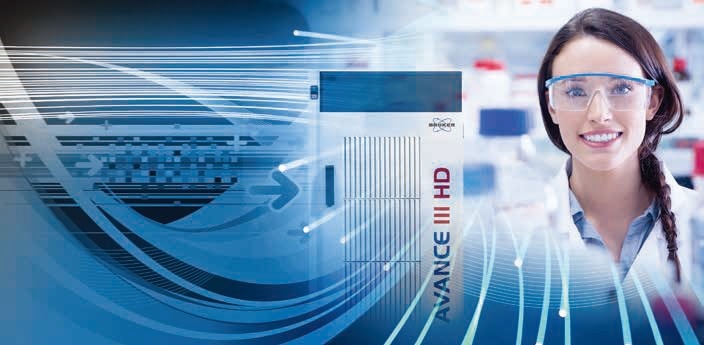
 400-889-7796
400-889-7796
 留言咨询
留言咨询
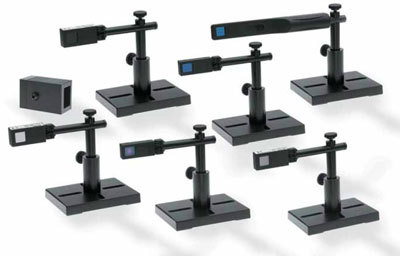
 400-628-5299
400-628-5299
 留言咨询
留言咨询
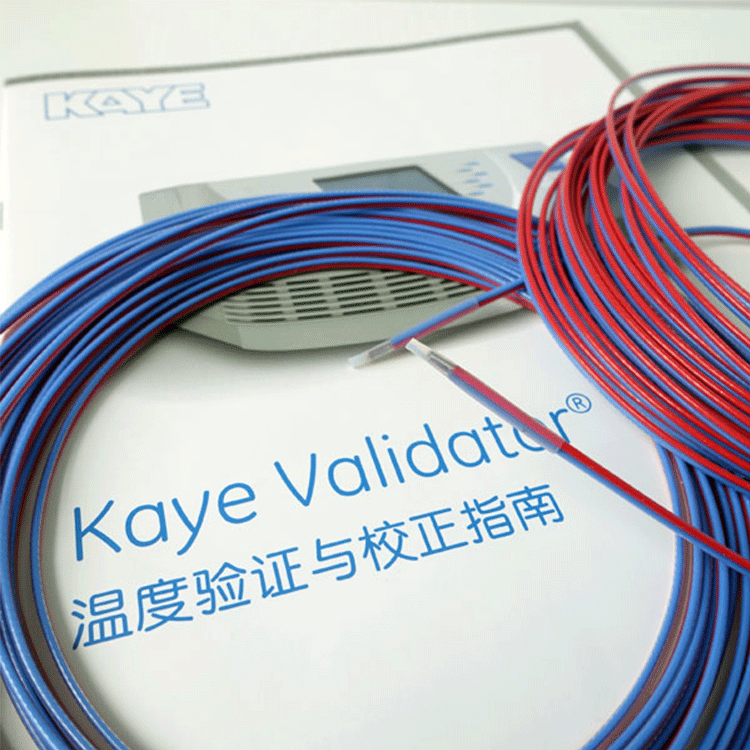
 留言咨询
留言咨询
